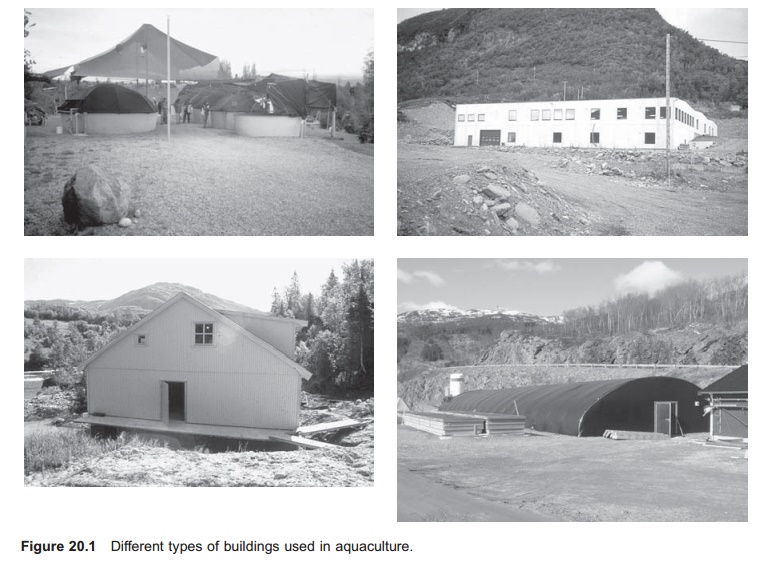Chapter: Aquaculture Engineering : Buildings and Superstructures
Types, shape and roof design of Buildings in Aquaculture Engineering
Types, shape and roof design
Types
Several types of buildings can be used for aquaculture facilities. On the basis of their construction they can be categorized into different types ranging from simple superstructures with or without walls to complete buildings (Fig. 20.1). Buildings can be insulated or uninsulated, and can be built for various lifetimes, either short or long.

The simplest superstructure is a shadow net. This is used to prevent the fish getting sunburned and to inhibit solar heating of the water. A slightly more advanced construction results when plastic sheeting or tarpaulin is substituted for the shadow net and a tent is created. Normally a framework of steel pipes keeps this upright. The tent can either be for one tank or larger for the complete farm. On single tanks a hemispherical shaped construction is commonly used. It is also possible to have an insulated tent made of two layers of plastic with insulation in between. A bowed shape is a cheap construction to use here.
A typical building is, however, based on weather-tight walls and a roof made of fixed materials. The duration of such buildings is much longer than of the simpler tent constructions. Buildings on the farm may have one or several storeys. If there are possibilities for utilizing the terrain and hence gravity for internal transport of fish and feed, it will be advantageous. For instance, if small fish can be grown on the first floor and on-growing takes place in the ground floor, tapping of the fish to the on-growing department is possible, which gives a simple system for internal transport of fish. The feeders may also be filled from the first floor if they hang in the roof of the ground floor over the fish tanks.
Shape
Buildings may have different shapes. When thinking of economy, the best is to have a square or especially a rectangular shape for the building. Angles in the ‘body of’ the building will increase the costs.
The reason for having angles must therefore be to improve the functionality of the building, for example, by improving the feed or fish handling.
Roof design
The roof may also have different constructions. A ridge roof is the most usual, but a sloping roof may also be used. Normally a ridge roof will be the most economic. A flat roof may also be used, but is much more difficult to build correctly and is especially difficult to get completely watertight. In areas with snow a flat roof is not recommended; it may be necessary to clear the snow, which is difficult. In addition the weight of the snow will press the roof down, so a large and costly frame is necessary. The chosen shape and roof of the building will also depend on available materials.
Related Topics